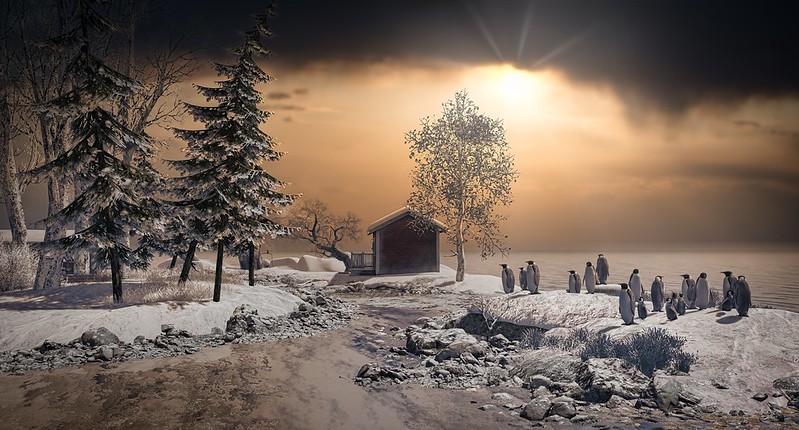With winter finally over, many Americans are excitedly planning for the warmer months. For people who live in colder climates, though, the thought of next winter is always lingering in the back of the mind.
Instead of waiting until the last minute to find new strategies for fighting off the cold, read on to find out about nine natural ways to keep warm during the colder months to prepare now for next winter.

1. Hit the Sauna
Saunas offer a fantastic way to get warm while simultaneously increasing blood flow and detoxifying the body. Investing in home saunas even means that homeowners living in cold climates don’t have to leave the warmth and comfort of their own houses.
Instead, after arriving home from work, school, or a hard afternoon of shoveling snow, users can heat up their infrared saunas and relax.
2. Take a Ginger Bath
Taking a hot bath is a fantastic way to warm up after spending time outside in the cold, and adding just a little bit of ginger to the water can further improve its warming qualities.
Ginger helps the body warm up by boosting circulation, and all it takes is a half cup of fresh ginger root or one teaspoon of the powdered spice. Just make sure to test for allergies first by rubbing fresh ginger on a small patch of skin to identify potential sensitivities.
3. Avoid Iron Deficiency Anemia
As the name implies, iron deficiency anemia is caused by a lack of iron, which inhibits the proper delivery of oxygen throughout the body.
While eating healthful, iron-rich foods like poultry, seafood, leafy greens, beans, seeds, and nuts can help, consuming those foods may not be enough for everyone.
Anyone who notices signs of iron deficiency anemia, such as cold hands or feet, should head to the doctor for a blood test to determine whether iron supplements may be beneficial.
4. Eat Warming Foods
There’s a good reason that soups, stews, and certain spices are so popular during the winter months, and it goes beyond the comfort factor. Eating certain foods promotes thermogenesis, boosting a consumer’s metabolism and keeping the person warm.
Soups and stews tend to avoid complex carbohydrates, which require more energy to digest, and focus instead on more warming ingredients. Popular winter soups are also more likely to contain beneficial spices like ginger, cinnamon, cloves, and cumin.
5. Drink Hot Beverages
A steaming hot cup of tea, cider, or hot chocolate can be incredibly comforting on a cold day, and to some degree, it can also keep the drinker warm for a while.
Consuming hot liquids may trigger certain receptors in the mouth that cause people to experience a wave of increased warmth, and just holding a hot beverage in cold hands can be quite comforting.
Add to this the fact that most popular winter drinks contain warming spices and it’s clear that a tasty cup of ginger tea or cinnamon-flavored cider is well worth the effort.
Read Also:
6. Avoid Consuming Too Much Alcohol
There’s a caveat to the “drink hot beverages” advice offered above: they should not contain alcohol. While a glass of mulled wine or a hot toddy might make someone feel a good deal warmer, it won’t actually help to warm the body or retain heat.
Instead, alcohol dilates the blood vessels under the skin, bringing more blood to its surface and lowering the body’s core temperature.
While it’s generally okay to have a hot alcoholic drink on a cold night, it’s important to distinguish between real and perceived warmth. Assuming that alcohol induces actual warmth can leave people at an increased risk of developing hypothermia.
7. Try Some Breathing Exercises
Sometimes, staying warm is more a matter of doing some mental work than it is of changing one’s physical situation. The Taoist tradition even has specific teachings for people who want to keep their bodies warm naturally using breathing exercises.
The Taoist technique is called “vase breathing,” and it involves holding the breath while contracting the pelvic floor and abdominal muscles while imagining warm energy being breathed in, and there are studies to prove it helps.
Other traditions recommend different breathing exercises. The bottom line with this tip is that, sometimes, all it takes to feel warm is a quick reframe and some distraction from the cold.
8. Get Up and Get Moving
This tip is pretty straightforward, but it’s surprising how many people fail to consider the benefits of exercise in keeping warm outdoors. The science behind it is simple: Exercise burns calories, which converts stored energy into heat.
It also increases circulation, helping to bring that added heat out to the extremities to keep chilly hands and feet warm.
There’s no need to go out and run a marathon. Try going out for a brisk walk on a cold day or doing a few jumping jacks while waiting for the bus. Just make sure not to overdo it because breaking a sweat when it’s cold can increase the risk of developing hypothermia.
9. Layer Up
It can be hard to dress for the weather during the winter, especially since most people go between cold outdoor environments and heated houses, offices, and stores.
The best solution is to wear strategic layers that hold heat close to the body and minimize the amount of skin that will be exposed to the elements.
Wear tighter clothes such as under armor close to the body, then layer some looser pieces to form an air buffer.
It helps to make sure the outer layers are easy to remove. Transitioning into a warm room from a chilly outdoor environment can, like exercise, make people sweat. Taking off those extra outer layers will help to prevent this problem.
Stay Warm Next Winter
With most of the coldest days of winter behind them, most people are settling into spring routines.
This year, try to use some of the warmer days to prepare for next winter by stocking up on soups and hot drinks, buying some climate-appropriate clothes, or installing an infrared sauna at your house. It will be worth the effort when the temperatures start to drop again.










